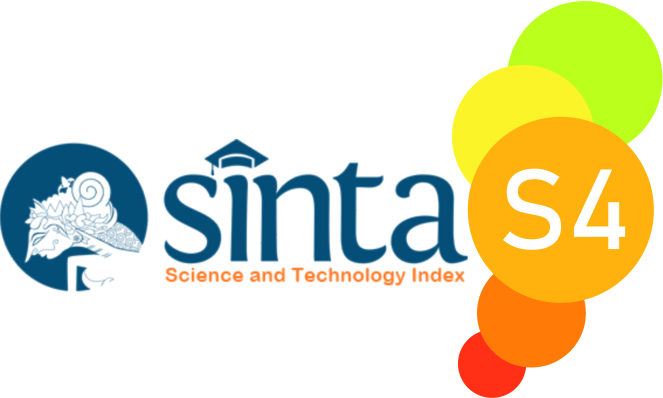Rambutan Reading Center: As A Solution for The Development of Children's Character and Morality in the Bandar Selamat Area, Medan Tembung District, Medan City
 ), Felycia Nainggolan(2), Rouli Agustina Zebua(3), Vitra Anugrah Siringo-ringo(4), Karina Suvena(5), Ayu Listiyana Wahyuni(6),
), Felycia Nainggolan(2), Rouli Agustina Zebua(3), Vitra Anugrah Siringo-ringo(4), Karina Suvena(5), Ayu Listiyana Wahyuni(6), (1) Universitas Negeri Medan
(2) Universitas Negeri Medan
(3) Universitas Negeri Medan
(4) Universitas Negeri Medan
(5) Universitas Negeri Medan
(6) Universitas Negeri Medan
 Corresponding Author
Corresponding Author
DOI : https://doi.org/10.24036/spektrumpls.v10i3.116658
Abstract
The Rambutan Reading House was formed to be able to serve the community starting from children who are vulnerable and easily influenced by the environment as well as to improve children's religious knowledge and abilities in the programs provided by the Rambutan Reading House. Nanda Fauzi Matondang, the owner and founder, believes that the power of spirituality can make a person, especially children, prevent the high rate of drug abuse. This study aims to describe how the establishment of a Rambutan Reading House program when the environment was rampant with drugs. The research uses a qualitative descriptive method with a case study approach. Data collection techniques using interviews, study documentation and observation. The results showed that the implementation of the Rambutan Reading House in Bandar Selamat Village had a positive impact and made changes for the better in society. However, the obstacles encountered were the views of several other communities regarding the establishment of the Rambutan Reading House, and the lack of volunteers and attention from the government to improve the existence of the Rambutan Reading House.
Keywords: Rambutan Reading House, study, environmentReferences
Ahmadi, A. (2010). Psikologi Umum. Jakarta: Rineka Cipta.
Ajeng, P. I., & Jumino, J. (2014). Pengaruh Desain Interior Terhadap Minat Kunjung di UPT Perpustakaan Dian Nuswantoro Semarang. Jurnal Ilmu Perpustakaan, 3(2). Retrieved from https://www.neliti.com/publications/209518/pengaruh-desain-interior-terhadap-minat-berkunjung-di-upt-perpustakaan-dian-nusw#cite
Amsyari, F. (1986). Prinsip-prinsip Masalah Pencemaran Lingkungan. Jakarta: Ghalia Indonesia.
Choiri, M. M. (2017). Upaya Pemanfaatan Lingkungan Sekitar Sebagai Sumber Belajar Anak. Jurnal Refleksi Edukatika, 8(1). Retrieved from https://core.ac.uk/download/pdf/304202391.pdf
Dwi, A. M. (2011). Pengaruh Desain Interior Perpustakaan Terhadap Pembentukan Citra Positif Perpustaka. EduLib, 1(1).
Fatimah, E. (2006). Psikologi Perkembangan Peserta Didik. Bandung: Pustaka Setia.
Nasution, S. (2003). Metode Penelitian Naturalistik Kualitatif. Bandung: Tarsito.
Novarikha, A., Rengu, S. P., & Hermintatik. (2015). Peran Desain Interior terhadap Kepuasan Pemustaka. Jurnal Administrasi Publik (JAP), 3(11). Retrieved from https://www.google.com/url?sa=t&rct=j&q=&esrc=s&source=web&cd=&cad=rja&uact=8&ved=2ahUKEwir2v7sm-L5AhXcUGwGHWVDBMQQFnoECAIQAQ&url=https%3A%2F%2Fmedia.neliti.com%2Fmedia%2Fpublications%2F82449-ID-peran-desain-interior-terhadap-kepuasan.pdf&usg=AOvVaw2hd3YcfGbSV2tzg9PUjCsq
Saepudin, E. (2015). Tingkat Budaya Membaca Masyarakat. Jurnal Kajian Informasi & Perpustakaan, 3(2), 271–282.
Siska, M., Solfema, S., & Aini, W. (2018). Hubungan Dukungan Sosial Orang Tua dengan Hasil Belajar Santri di MDA Nurul Haq Nagari Cubadak Kecamatan Dua Koto Kabupaten Pasaman. Spektrum: Jurnal Pendidikan Luar Sekolah (PLS), 1(2), 238. https://doi.org/10.24036/spektrumpls.v1i2.9053
Subianto, J. (2013). Peran Keluarga, Sekolah, dan Masyarakat dalam Pembentukan Karakter Berkualitas. Edukasia: Jurnal Penelitian Pendidikan Islam, 8(2).
Tamara, R. M. (2016). Peranan Lingkungan Sosial Terhadap Pembentukan Sikap Peduli Ligkungan Peserta Didik di SMA Negeri Kabupate Cianjur. Gea, Jurnal Pendidikan Geografi, 16(1).
 Article Metrics
Article Metrics
 Abstract Views : 200 times
Abstract Views : 200 times
Refbacks
- There are currently no refbacks.

This work is licensed under a Creative Commons Attribution-NonCommercial 4.0 International License.



